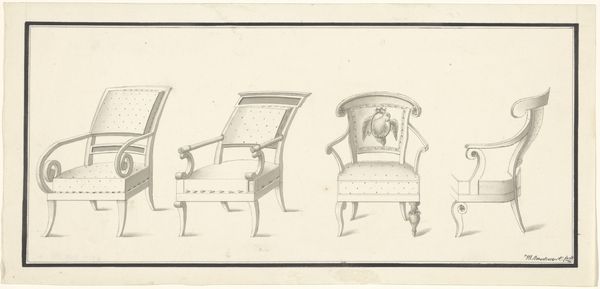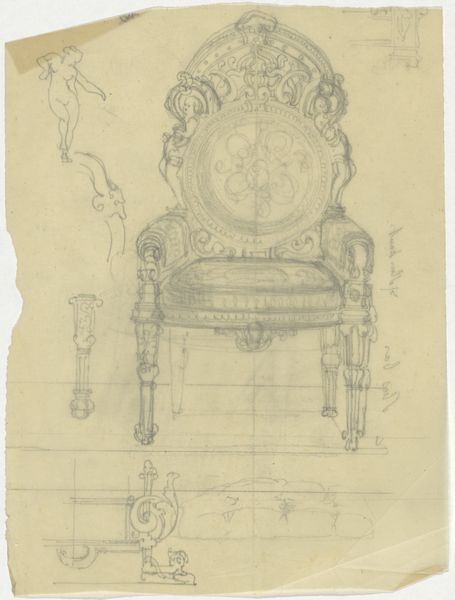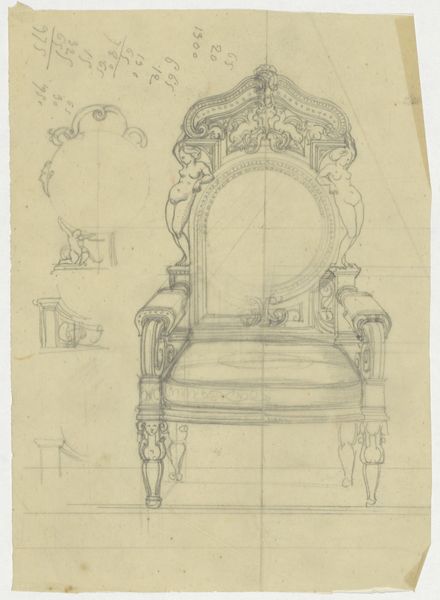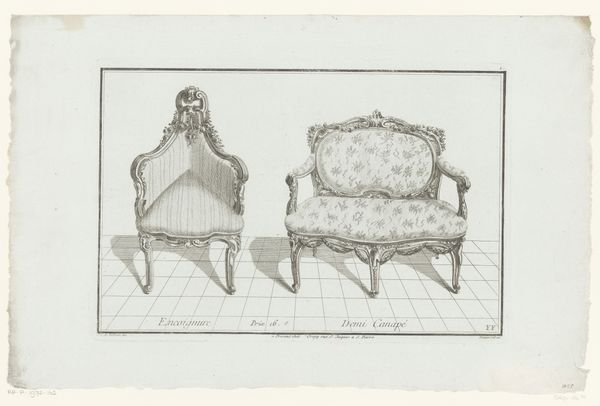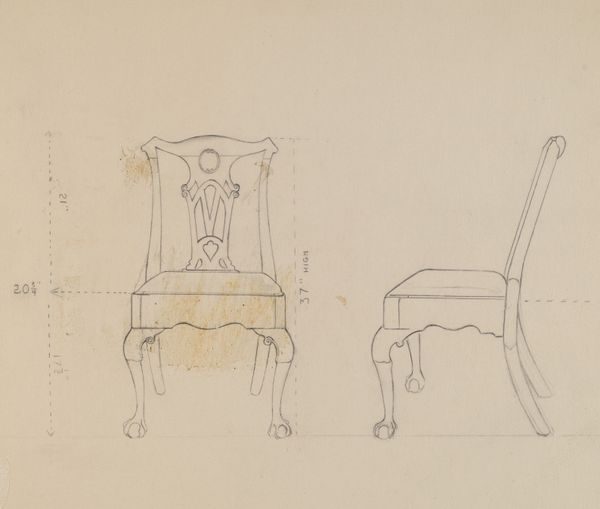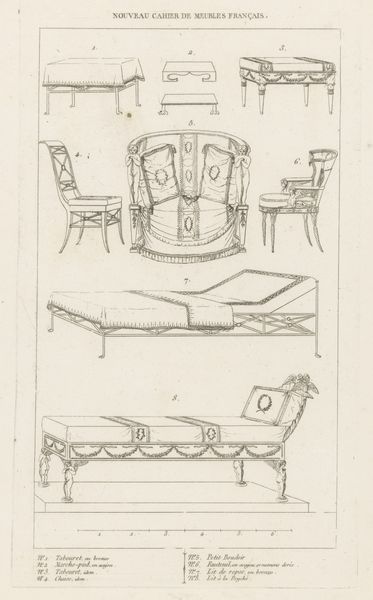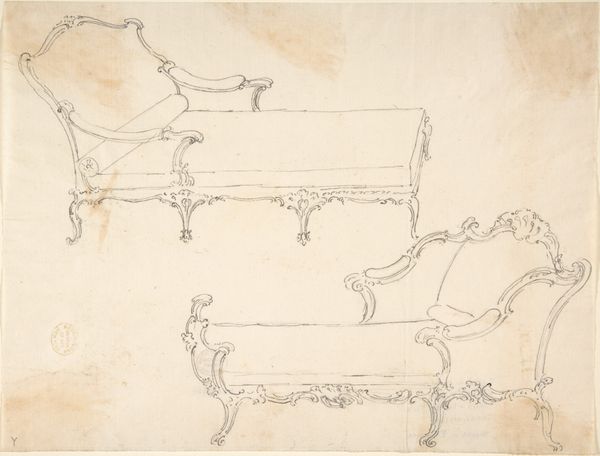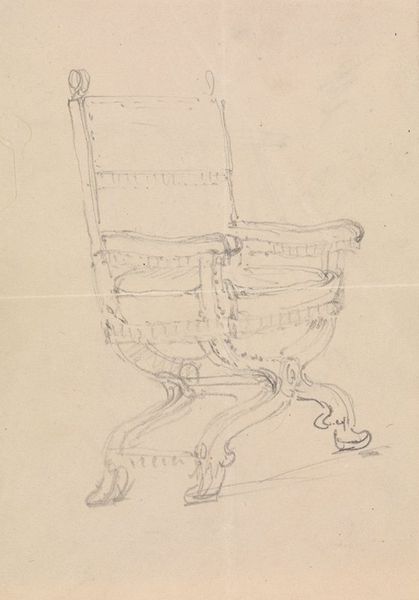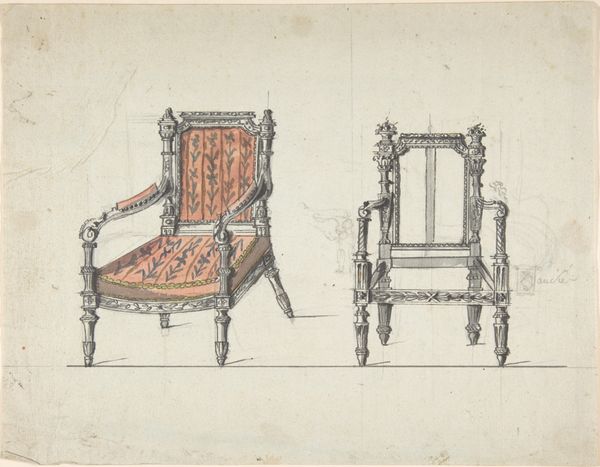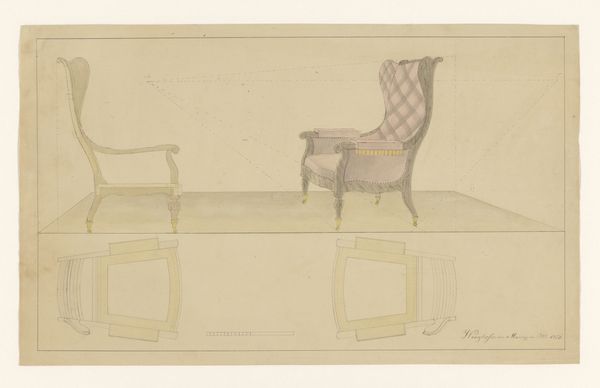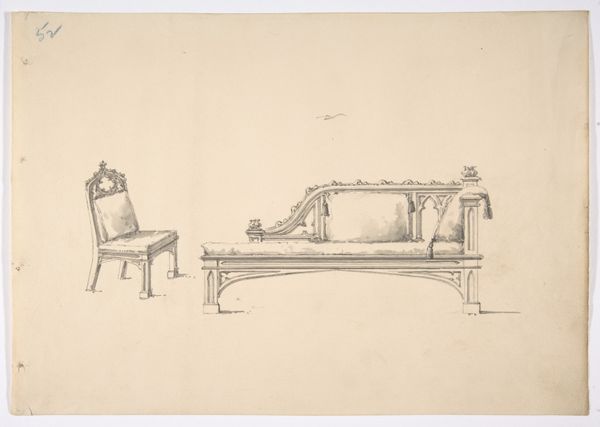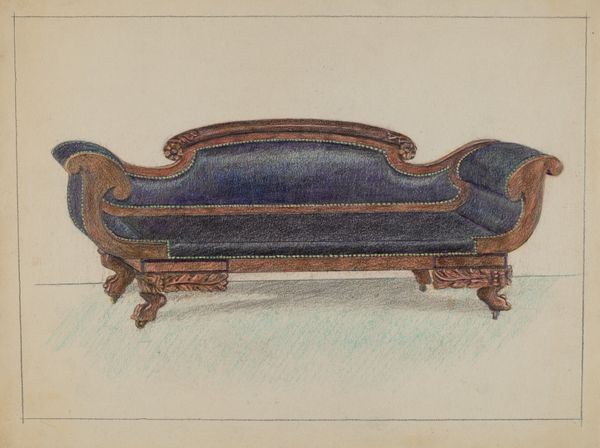
drawing, pencil
#
drawing
#
form
#
pencil
#
line
#
academic-art
#
decorative-art
Dimensions: height 165 mm, width 149 mm
Copyright: Rijks Museum: Open Domain
Editor: Here we have "Armstoel", an armchair design from around 1830 to 1850 by Firma Feuchère, rendered in pencil. It's quite ornate. The drawing style makes it feel academic and decorative. What stands out to you in terms of how it reflects its time and its making? Curator: Look closely at the pencil strokes. These aren't just lines; they represent labor. Each line is a deliberate mark reflecting the process of designing luxury for a specific clientele, the bourgeoisie perhaps? Editor: The craftsmanship feels so distant from our contemporary world of mass-produced furniture. Curator: Exactly. It encourages us to consider the social context. Think about the raw materials involved in actualizing such a design – the wood, the upholstery, and the labor of the artisans bringing this design to life. How does that influence its value? Editor: So the drawing itself becomes a record of those potential resources and skills. What about its fragmented look, the paper? Curator: Ah, even the paper scraps signify something. Are they repurposed? What does the collage construction technique convey? The collage challenges traditional notions of high art and planned output, right? What was Feuchère commenting on through its use? Editor: I see what you mean. The materiality extends beyond just the armchair itself to the materials used in designing the chair. Curator: Precisely. This drawing is more than just a representation; it is a tangible piece of the social and economic context that birthed it, from design to labor and manufacture. Editor: So it makes the object multi-layered. Thank you; I never would have thought of those elements. Curator: Understanding art means grasping at its physical making and how its creation reflects a specific system. Hopefully, this conversation helps the audience consider how those systems persist today!
Comments
No comments
Be the first to comment and join the conversation on the ultimate creative platform.
